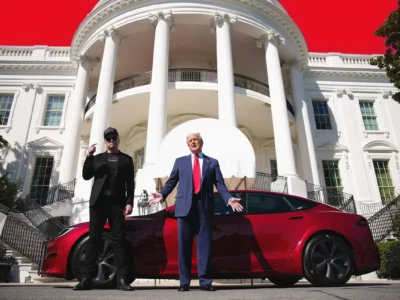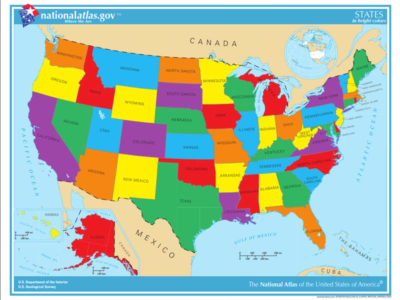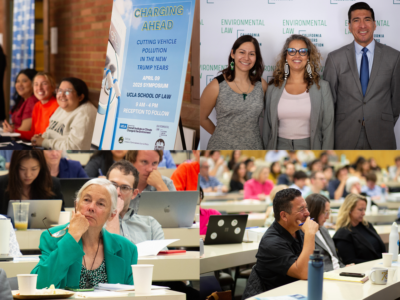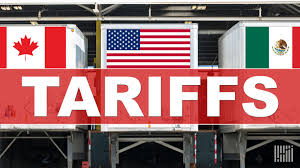electric vehicles
A Very Bad House Vehicle Pollution Bill
The Fuel Emissions Freedom Act may be a stunt, but it’s worth examining
It can be hard to keep track amid all the hair-raising developments in Congress and at the Supreme Court, but last week, a group of House Republicans led by Roger Williams of Texas introduced the Fuel Emissions Freedom Act, hot on the heels of the purported (illegal) termination of California’s vehicle emissions standard waiver. This freedom-to-pollute …
Continue reading “A Very Bad House Vehicle Pollution Bill”
CONTINUE READINGA Path Forward for Vehicle Electrification?
It’s been a rough few months for vehicle electrification efforts in the United States. While Congress swaps proposals to eliminate federal electric vehicle purchase, manufacturing, and charging incentives in order to “pay for” massive tax cuts for the wealthy, President Trump last week signed a Congressional Review Act resolution that claims to eliminate California’s nation-leading …
Continue reading “A Path Forward for Vehicle Electrification?”
CONTINUE READINGTalking to Skeptics About Clean Energy
Some people will stop listening if you talk about climate change. But there are other arguments.
The dangers of climate change provide excellent reasons to support clean energy. But that argument can be futile — or worse, counterproductive — when listeners don’t take climate change seriously or reject the idea altogether. Fortunately, there are other arguments that may better appeal to them.
CONTINUE READINGSharing the Sidewalk with EV Charging Cords
New CLEE policy brief describes an innovative EV charging solution.
In cities throughout the US, electric vehicle (EV) drivers have found a creative, low-cost way to transfer electricity from their home to the curbside. You have probably seen it by now: a charging cord peeks out from a home and sprawls across the sidewalk–either beneath your feet or over your head–before plugging into a curbside-parked …
Continue reading “Sharing the Sidewalk with EV Charging Cords”
CONTINUE READINGState Climate Programs Under Trump – Little Drama, Steady Progress
Ignoring Trump, state have continued work on achieving their climate targets.
Despite all the drama in D.C., state governments have continued to make quiet progress in their efforts to expand clean energy and phase out fossil fuels. These states are focused on tangible steps forward, not on capturing online clicks, so their efforts may escape notice. But the cumulative effect of these month-by-month, smaller-scale initiatives is significant.
CONTINUE READING“What We Do Matters:” UCLA’s Charging Ahead Symposium
States and cities have a lot of tools to cut vehicle pollution. It’s time to break them out.
Trump is a bump. A nasty one, but a bump nonetheless, because the world is on the road to zero-emission fuels and vehicles no matter what. That was one takeaway from “Charging Ahead,” the UCLA Emmett Institute’s annual symposium held on April 9 — devoted this year to cutting vehicle pollution during the next four …
Continue reading ““What We Do Matters:” UCLA’s Charging Ahead Symposium”
CONTINUE READINGLocal EV Leadership During Federal Withdrawal
The clean mobility transition is in local hands.
The federal landscape for electric vehicle (EV) investment is laden with pause and uncertainty. High-profile program discontinuations–both planned and executed–threaten to disrupt EV deployment efforts, while unpredictable tariffs interfere with drivers’ ability to afford vehicles. As local leaders work to reconcile ambitious transport decarbonization goals with the current lapse in federal climate leadership, public planners, …
Continue reading “Local EV Leadership During Federal Withdrawal”
CONTINUE READINGShould Blue States Punish Tesla?
The political economy implications of how EV tax credits are distributed
In the wake of Elon Musk’s role in the new administration and its efforts to fire large numbers of federal employees, some Democratic state elected officials have called for rethinking EV subsidies to cut out Tesla. There is also evidence that Democratic state legislators have become much more hostile to Tesla lobbying. Matthew Yglesias, a …
Continue reading “Should Blue States Punish Tesla?”
CONTINUE READINGWhy I Still ♥ IRA
Biden’s climate law has already had a dramatic impact.
With over a half-trillion dollars in clean tech investment to date, the Inflation Reduction Act has left an indelible mark on U.S. climate policy. It’s unlikely that Congress will vote to repeal the whole law, given massive investments in GOP congressional districts. But even if they did, there’s no undoing the investments already made.
CONTINUE READINGTariffs and Clean Energy: What You Need to Know
The effect of tariffs on energy markets is complex, and a lot depends on the details.
International trade economics is complicated, and we can’t be certain of how tariffs will work out, particularly in the long term when economies have fully adjusted to them. Trump’s hope is that the tariffs will cause a boom in U.S. production, although there is also evidence that protected industries are less efficient and innovative, resulting in higher consumer prices. Impacts on clean energy could be negative, The same is true for impacts on fossil fuels.
CONTINUE READING








